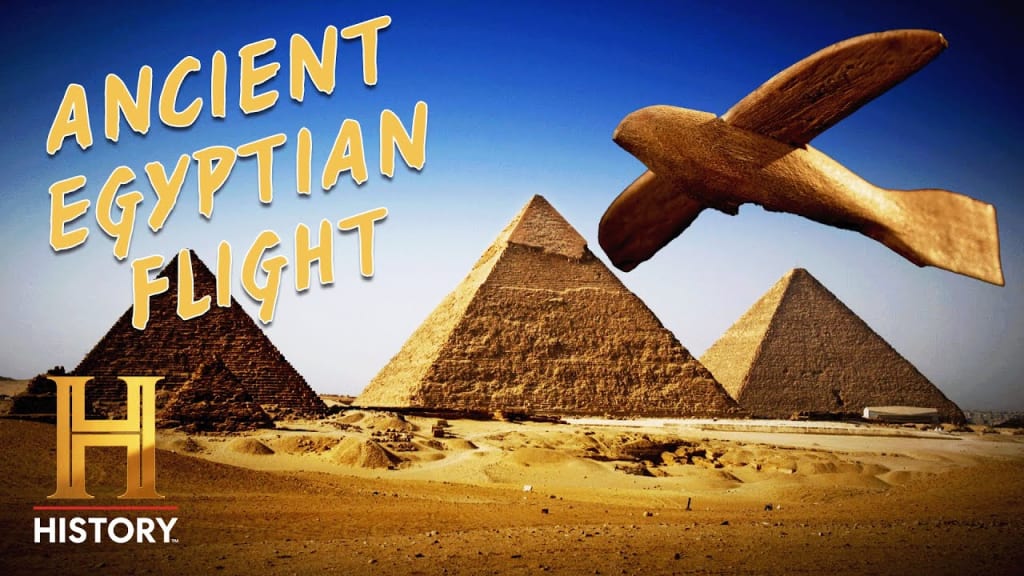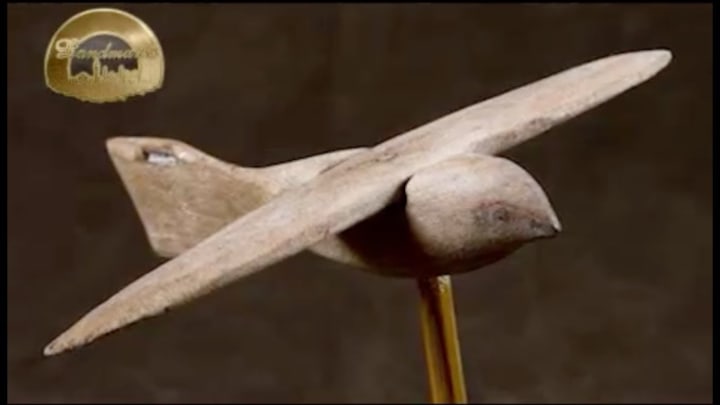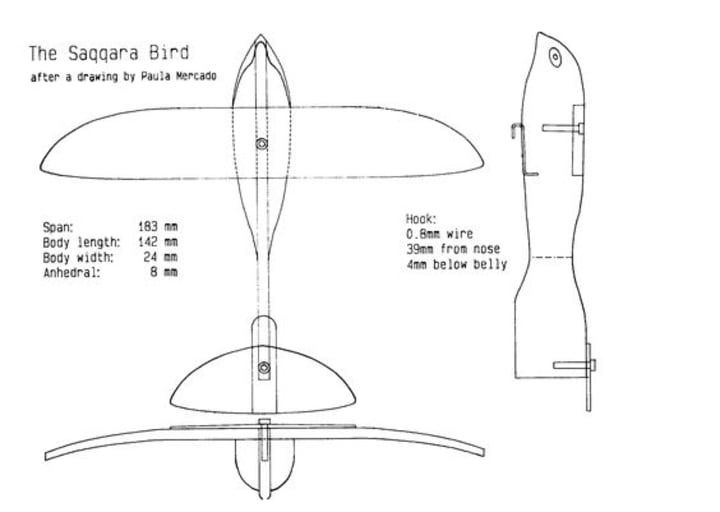
The Saqqara bird is indeed an intriguing artifact, and its true purpose and significance remain a subject of debate and speculation among historians, archaeologists, and experts. As you mentioned, the Sakara bird is a small wooden object that resembles a bird with wings outstretched. Its peculiar design has led to various theories about its function and symbolism.

The theory proposed by Dr. Khalil Messiha, suggesting that the Sakara bird could have been a model of a monoplane, is one of the more speculative and controversial explanations. He believed that the bird's wings were angled in a way that could generate lift, similar to modern airplanes. However, there are several factors to consider when evaluating this theory:
1. **Lack of Supporting Evidence:** While the Sakara bird's design might resemble a plane, it's important to note that there is no other substantial evidence from ancient Egyptian sources that indicates they had the technological knowledge required for powered flight.
2. **Limited Aerodynamic Understanding:** Ancient Egyptians did not possess the understanding of aerodynamics necessary to design a functional airplane. The principles of aerodynamics and the materials needed to build a working aircraft are complex and require a level of engineering knowledge that was not present in ancient times.
3. **Symbolism and Ritual Objects:** Many artifacts found in ancient tombs were symbolic or ritualistic in nature, rather than functional objects. Objects placed in tombs often held spiritual or symbolic meaning, and their designs might not necessarily reflect practical functionality.
4. **Cultural and Technological Context:** Ancient civilizations had unique cultural contexts and priorities. The concepts and technologies they focused on might differ significantly from what we expect based on modern knowledge.
5. **Lack of Tail Plane:** One significant challenge to the airplane theory is the absence of a horizontal tail plane in the design. In modern aircraft, the tail plays a crucial role in stability and control. The Sakara bird's design lacks this key element.

In light of these considerations, the idea that the Sakara bird represents an ancient model of an airplane is not widely accepted within the academic and archaeological communities. While it's fascinating to imagine ancient civilizations having advanced technological knowledge, there is currently insufficient evidence to support the claim that the Sakara bird was a representation of a functional aircraft.
It's important to approach historical artifacts with an open mind and consider multiple perspectives. The Sakara bird remains a mystery, and while it's unlikely that it was a functioning airplane, its true purpose and symbolism could be related to aspects of ancient Egyptian culture and spirituality that are not fully understood today.
Fascinating examples of artifacts and inventions that appear to be ahead of their time, raising questions about the technological capabilities of ancient civilizations. These types of artifacts are often referred to as "out of place artifacts" (OOPArt) because they seem to challenge our understanding of the historical timeline and the technological progress of different cultures.
1. **The Sakara Bird:** The experiments conducted to test the flight capabilities of replicas of the Sakara bird are interesting, and they provide insights into how the design might have functioned as a glider. However, the lack of a tail plane and the absence of direct evidence from ancient texts or sources still make it difficult to definitively conclude that the Sakara bird was an ancient airplane prototype. While the tests suggest the possibility of gliding flight, they don't necessarily prove the ancient Egyptians' capability of powered flight.
2. **The Antikythera Mechanism:** The Antikythera mechanism is indeed a remarkable find that showcases impressive mechanical and astronomical knowledge. It's an intricate device that demonstrates a level of precision and understanding of celestial mechanics that was previously thought to be beyond the capabilities of the time it was created. This artifact provides a glimpse into the advanced scientific understanding of ancient civilizations.
3. **Ancient Toilets and Plumbing:** The presence of advanced plumbing and sanitation systems in ancient civilizations like the Minoans and the Indus Valley Civilization is evidence of their sophisticated engineering and urban planning. These innovations highlight the emphasis these cultures placed on cleanliness and hygiene, even thousands of years ago.
4. **Automated Doors:** The concept of automated doors has indeed been present for a long time, as seen in ancient civilizations such as the ancient Greeks and Romans. The design and engineering involved in creating such mechanisms demonstrate the ingenuity of these societies.

While these examples are intriguing and suggest that some ancient civilizations had a deeper understanding of certain technologies than we might have previously assumed, it's important to interpret them within the broader context of their times. Our understanding of history continues to evolve as new discoveries are made and technologies are developed to analyze and interpret ancient artifacts. However, claims about advanced technologies in ancient times should be supported by substantial evidence and evaluated critically by experts in relevant fields.
From ancient hydraulic systems and early batteries to the evolution of contact lenses and the transatlantic telegraph cable, these stories provide valuable insights into the progression of human knowledge and technology. They also highlight the importance of looking back at history to gain a deeper understanding of how we've reached our current state of technological advancement.
Remember, history is a treasure trove of inspiration and lessons, and these examples demonstrate how even seemingly simple or ancient technologies can lay the foundation for future breakthroughs.
About the Creator
Rohan
I am young and enthusiastic writer, prefer to get more encouragement from fellow audience and colleagues. Please do support guys.. Thanks in advance.. Thanks for all the love & encouragement .. cheers






Comments
There are no comments for this story
Be the first to respond and start the conversation.